Abstract
Between 1972 and 1996, 450 consecutive patients with intracranial meningiomas were operated on at Çukurova University School of Medicine. By size, intracranial meningiomas were classified as huge (>6 cm minimum diameter when extrapolated to anatomic size) or not huge (<6 cm). The present study involves 93 patients who underwent 109 craniotomies for the removal of huge meningiomas. All patients are adult, with 31 men and 62 women or a 1:2 male to female ratio, with a mean age of 48.7 ± 2.3 years at the time of diagnosis. The average duration of observed survival in 85 patients followed in the computed tomography (CT) era was 4.8 years and that of 8 patients in the pre-CT era was 8.8 years. Eleven patients died by the last follow-up assessment. Seventy-nine patients were still alive at the last follow-up assessment. The overall postoperative mortality rate was 3.2%. The overall recurrence rate was 19%. In descending order of frequency, the first five anatomic locations of the huge meningiomas were the parasagittal region in 18 patients (19.3%), the cerebral convexity in 15 (16.1%), the olfactory groove in 15 (16.1%), the falx in 12 (12.9%), and the tuberculum sellae in 11 (11.8%). The overall results of surgical treatment in 93 patients were total removal in 59 (63.4%), radical subtotal in 18 (18.3%), and subtotal in 16 (17.2%), with good outcome in 69 (74.1%), fair in 16 (17.2%), and poor in 5 (5.3%). In conclusion, the huge size of meningiomas affects the extent of removal, recurrence rate, postoperative outcome, operative morbidity and mortality rates, and survival time negatively.
Full text
PDF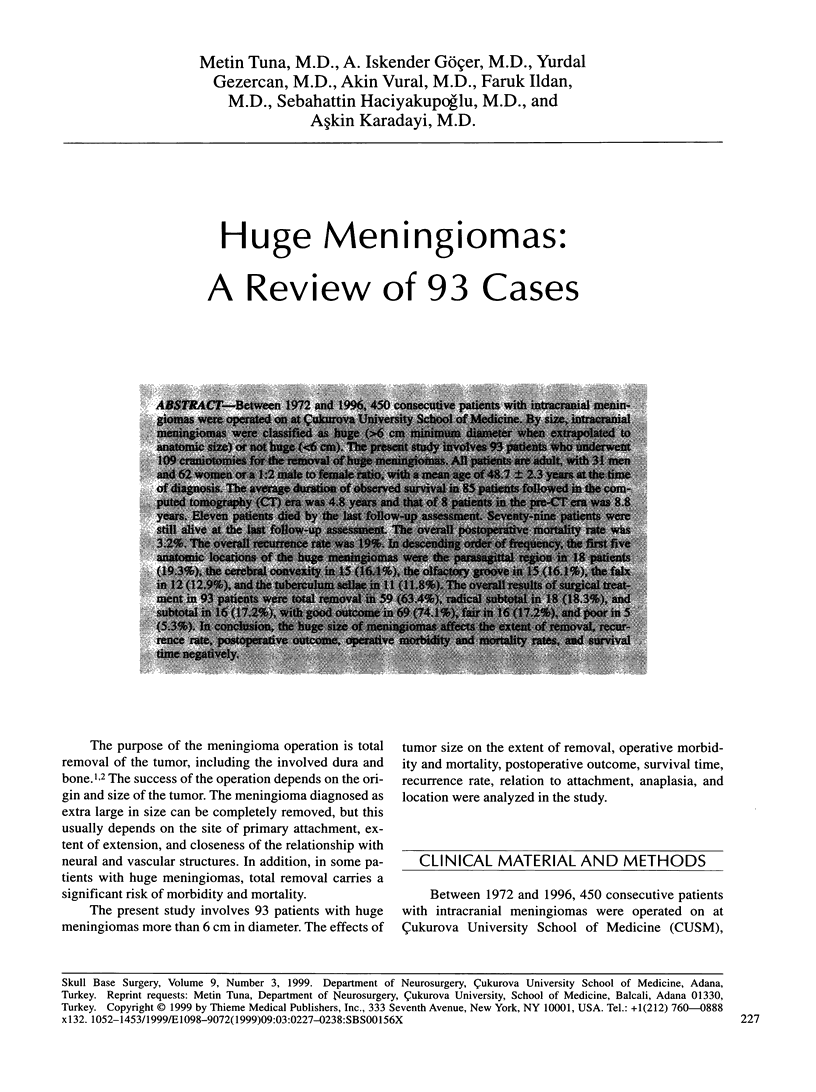
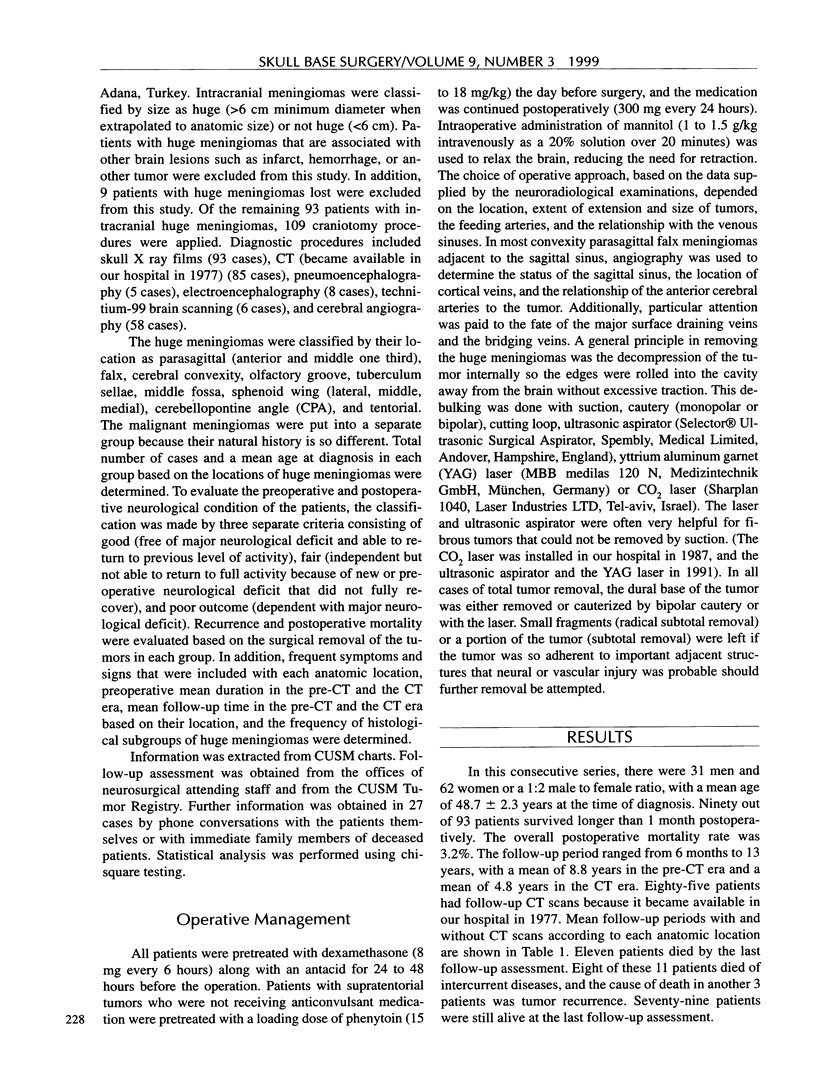
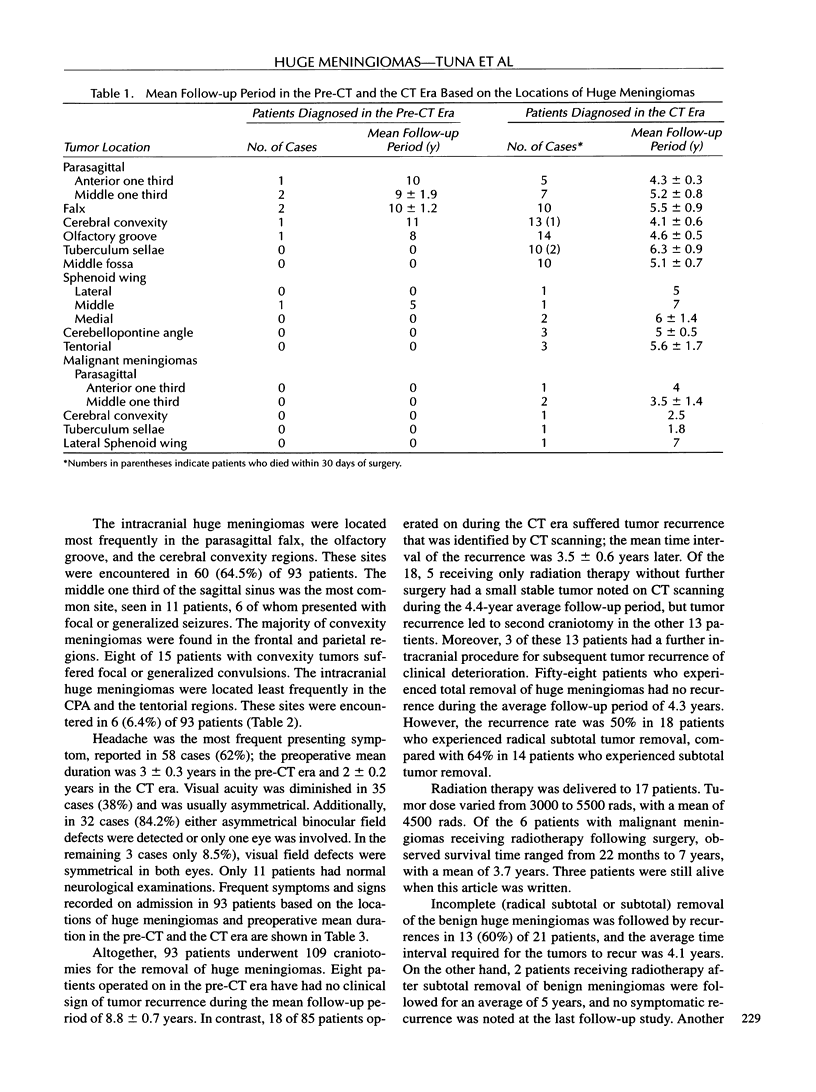
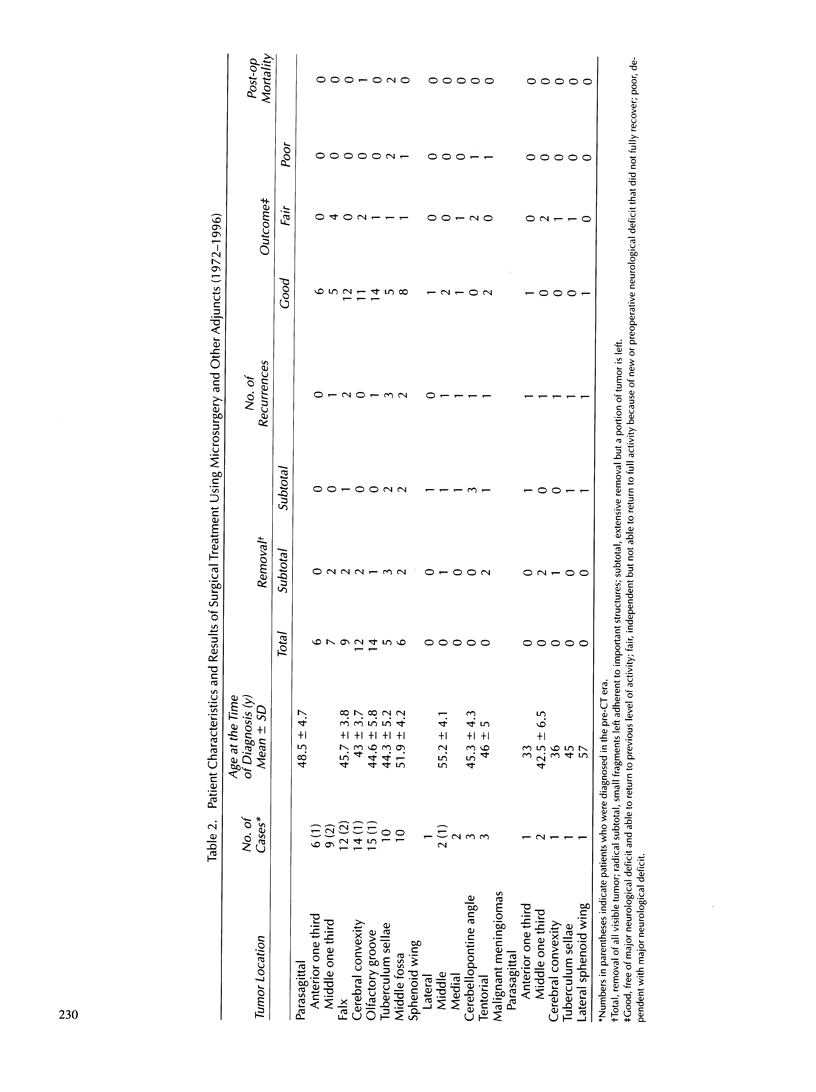
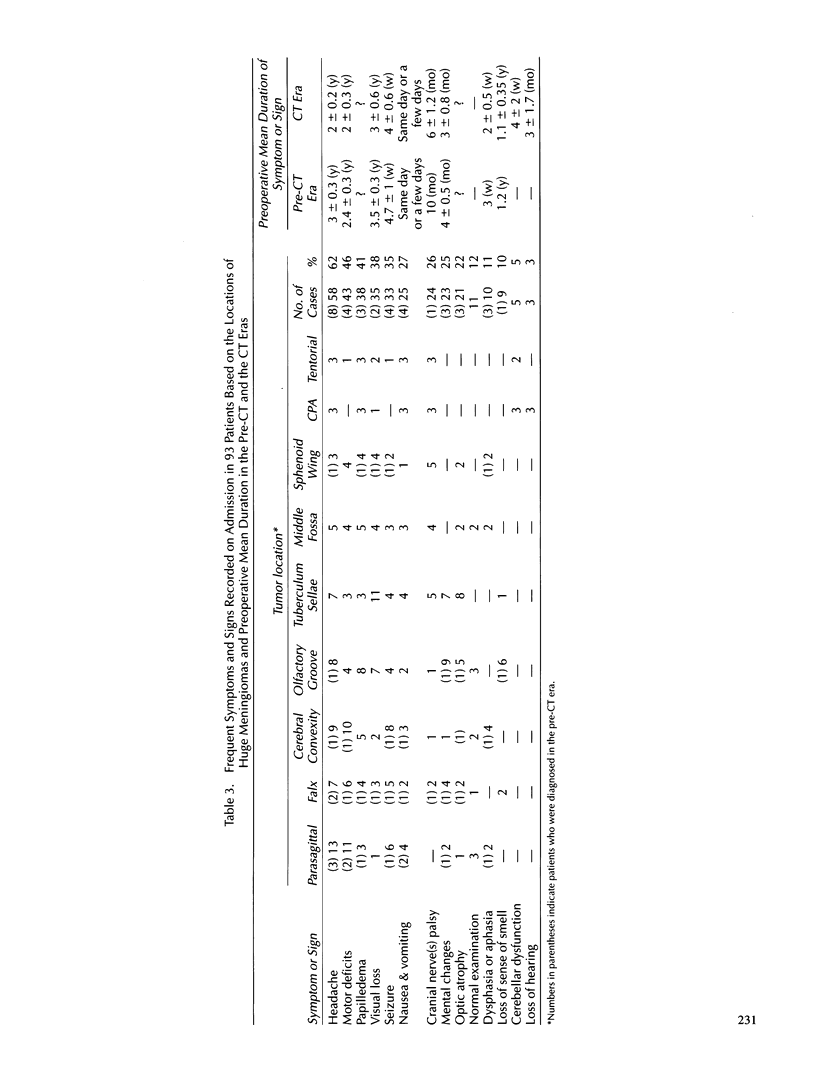
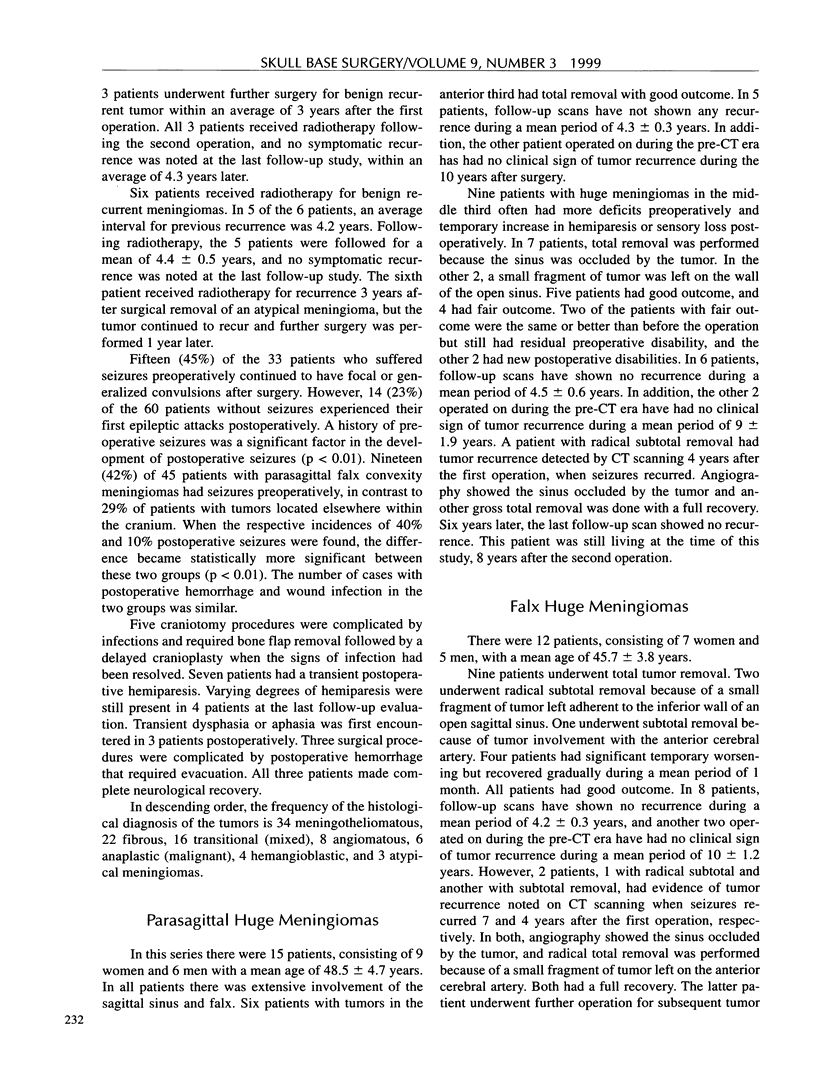
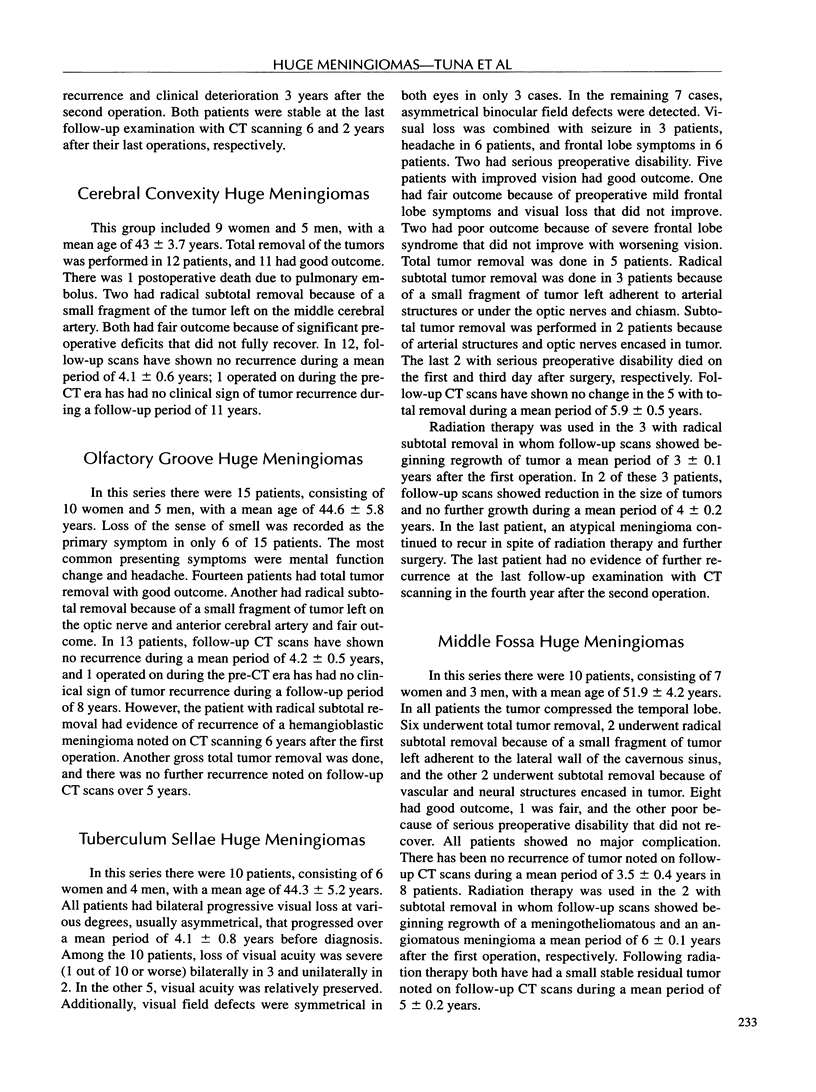
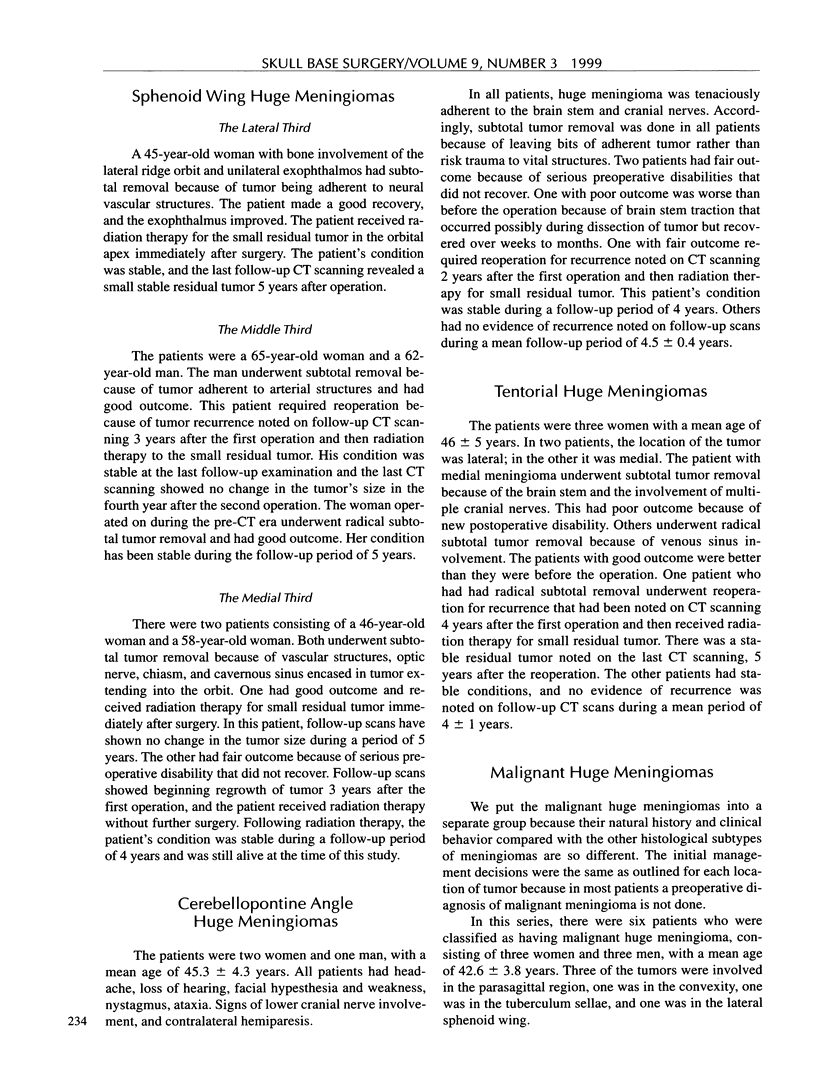
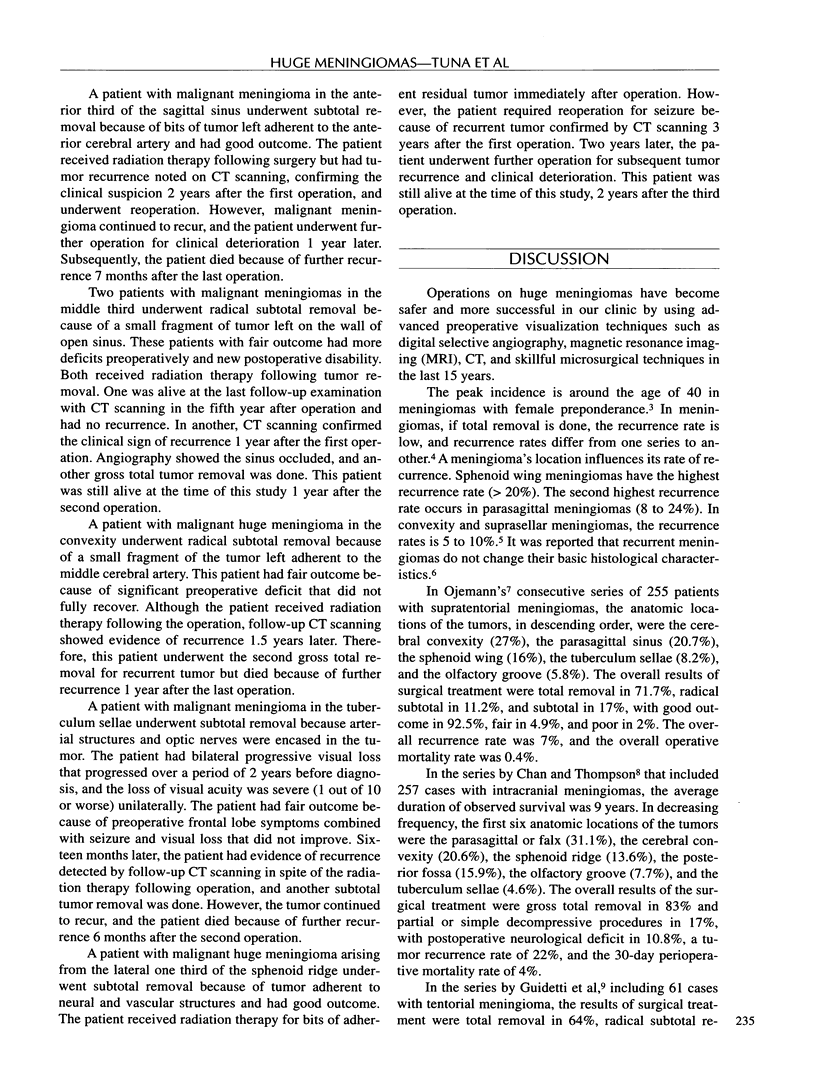

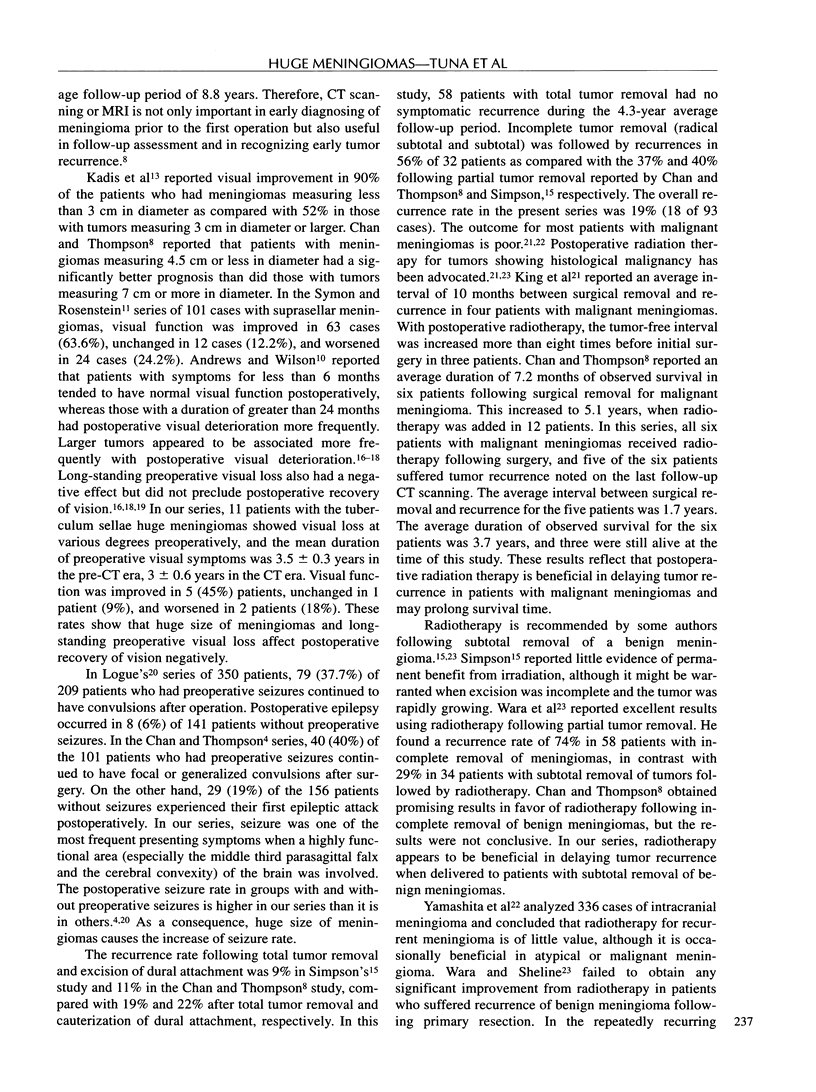
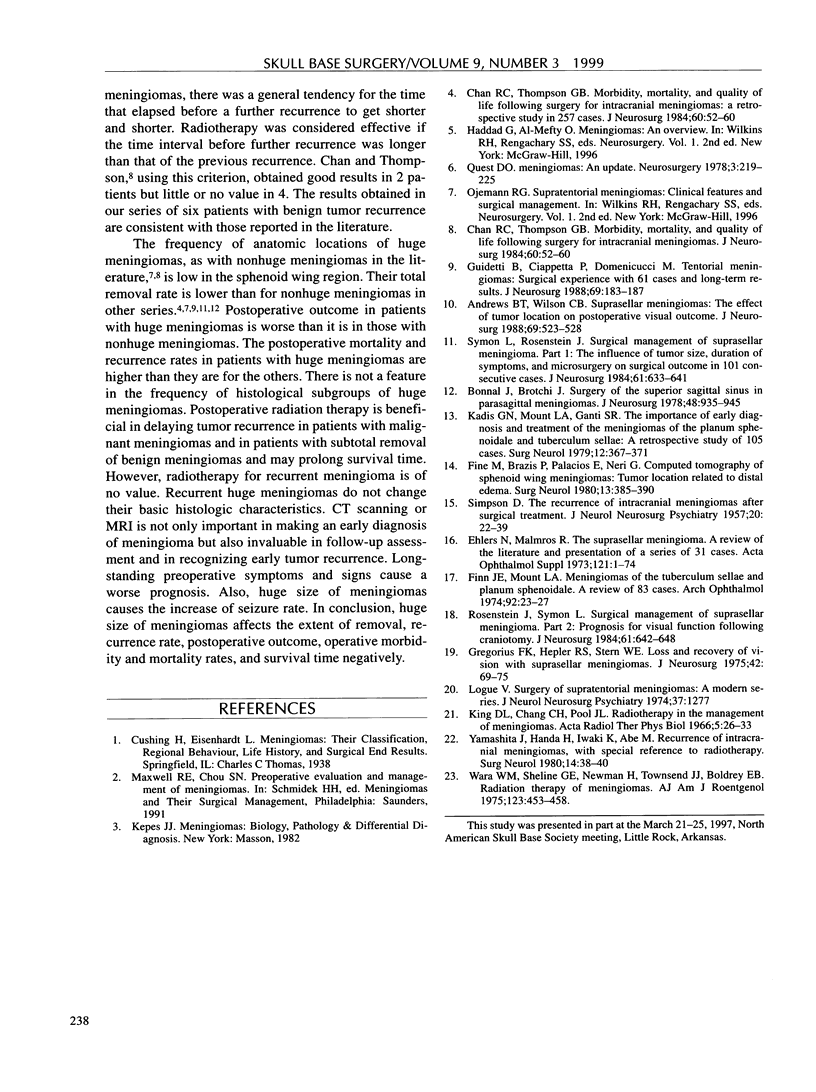
Selected References
These references are in PubMed. This may not be the complete list of references from this article.
- Andrews B. T., Wilson C. B. Suprasellar meningiomas: the effect of tumor location on postoperative visual outcome. J Neurosurg. 1988 Oct;69(4):523–528. doi: 10.3171/jns.1988.69.4.0523. [DOI] [PubMed] [Google Scholar]
- Bonnal J., Brotchi J. Surgery of the superior sagittal sinus in parasagittal meningiomas. J Neurosurg. 1978 Jun;48(6):935–945. doi: 10.3171/jns.1978.48.6.0935. [DOI] [PubMed] [Google Scholar]
- Chan R. C., Thompson G. B. Morbidity, mortality, and quality of life following surgery for intracranial meningiomas. A retrospective study in 257 cases. J Neurosurg. 1984 Jan;60(1):52–60. doi: 10.3171/jns.1984.60.1.0052. [DOI] [PubMed] [Google Scholar]
- Chan R. C., Thompson G. B. Morbidity, mortality, and quality of life following surgery for intracranial meningiomas. A retrospective study in 257 cases. J Neurosurg. 1984 Jan;60(1):52–60. doi: 10.3171/jns.1984.60.1.0052. [DOI] [PubMed] [Google Scholar]
- Ehlers N., Malmros R. The suprasellar meningioma. A review of the literature and presentation of a series of 31 cases. Acta Ophthalmol Suppl. 1973:1–74. [PubMed] [Google Scholar]
- Fine M., Brazis P., Palacios E., Neri G. Computed tomography of sphenoid wing meningiomas: tumor location related to distal edema. Surg Neurol. 1980 May;13(5):385–390. [PubMed] [Google Scholar]
- Finn J. E., Mount L. A. Meningiomas of the tuberculum sellae and planum sphenoidale. A review of 83 cases. Arch Ophthalmol. 1974 Jul;92(1):23–27. doi: 10.1001/archopht.1974.01010010027007. [DOI] [PubMed] [Google Scholar]
- Gregorius F. K., Hepler R. S., Stern W. E. Loss and recovery of vision with suprasellar meningiomas. J Neurosurg. 1975 Jan;42(1):69–75. doi: 10.3171/jns.1975.42.1.0069. [DOI] [PubMed] [Google Scholar]
- Guidetti B., Ciappetta P., Domenicucci M. Tentorial meningiomas: surgical experience with 61 cases and long-term results. J Neurosurg. 1988 Aug;69(2):183–187. doi: 10.3171/jns.1988.69.2.0183. [DOI] [PubMed] [Google Scholar]
- Kadis G. N., Mount L. A., Ganti S. R. The importance of early diagnosis and treatment of the meningiomas of the planum sphenoidale and tuberculum sellae: a retrospective study of 105 cases. Surg Neurol. 1979 Nov;12(5):367–371. [PubMed] [Google Scholar]
- King D. L., Chang C. H., Pool J. L. Radiotherapy in the management of meningiomas. Acta Radiol Ther Phys Biol. 1966;5:26–33. doi: 10.3109/02841856609139540. [DOI] [PubMed] [Google Scholar]
- Quest D. O. Meningiomas: an update. Neurosurgery. 1978 Sep-Oct;3(2):219–225. doi: 10.1227/00006123-197809000-00016. [DOI] [PubMed] [Google Scholar]
- Rosenstein J., Symon L. Surgical management of suprasellar meningioma. Part 2: Prognosis for visual function following craniotomy. J Neurosurg. 1984 Oct;61(4):642–648. doi: 10.3171/jns.1984.61.4.0642. [DOI] [PubMed] [Google Scholar]
- SIMPSON D. The recurrence of intracranial meningiomas after surgical treatment. J Neurol Neurosurg Psychiatry. 1957 Feb;20(1):22–39. doi: 10.1136/jnnp.20.1.22. [DOI] [PMC free article] [PubMed] [Google Scholar]
- Symon L., Rosenstein J. Surgical management of suprasellar meningioma. Part 1: The influence of tumor size, duration of symptoms, and microsurgery on surgical outcome in 101 consecutive cases. J Neurosurg. 1984 Oct;61(4):633–641. doi: 10.3171/jns.1984.61.4.0633. [DOI] [PubMed] [Google Scholar]
- Wara W. M., Sheline G. E., Newman H., Townsend J. J., Boldrey E. B. Radiation therapy of meningiomas. Am J Roentgenol Radium Ther Nucl Med. 1975 Mar;123(3):453–458. doi: 10.2214/ajr.123.3.453. [DOI] [PubMed] [Google Scholar]
- Yamashita J., Handa H., Iwaki K., Abe M. Recurrence of intracranial meningiomas, with special reference to radiotherapy. Surg Neurol. 1980 Jul;14(1):33–40. [PubMed] [Google Scholar]


